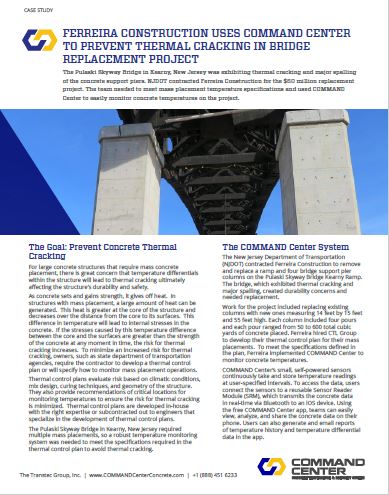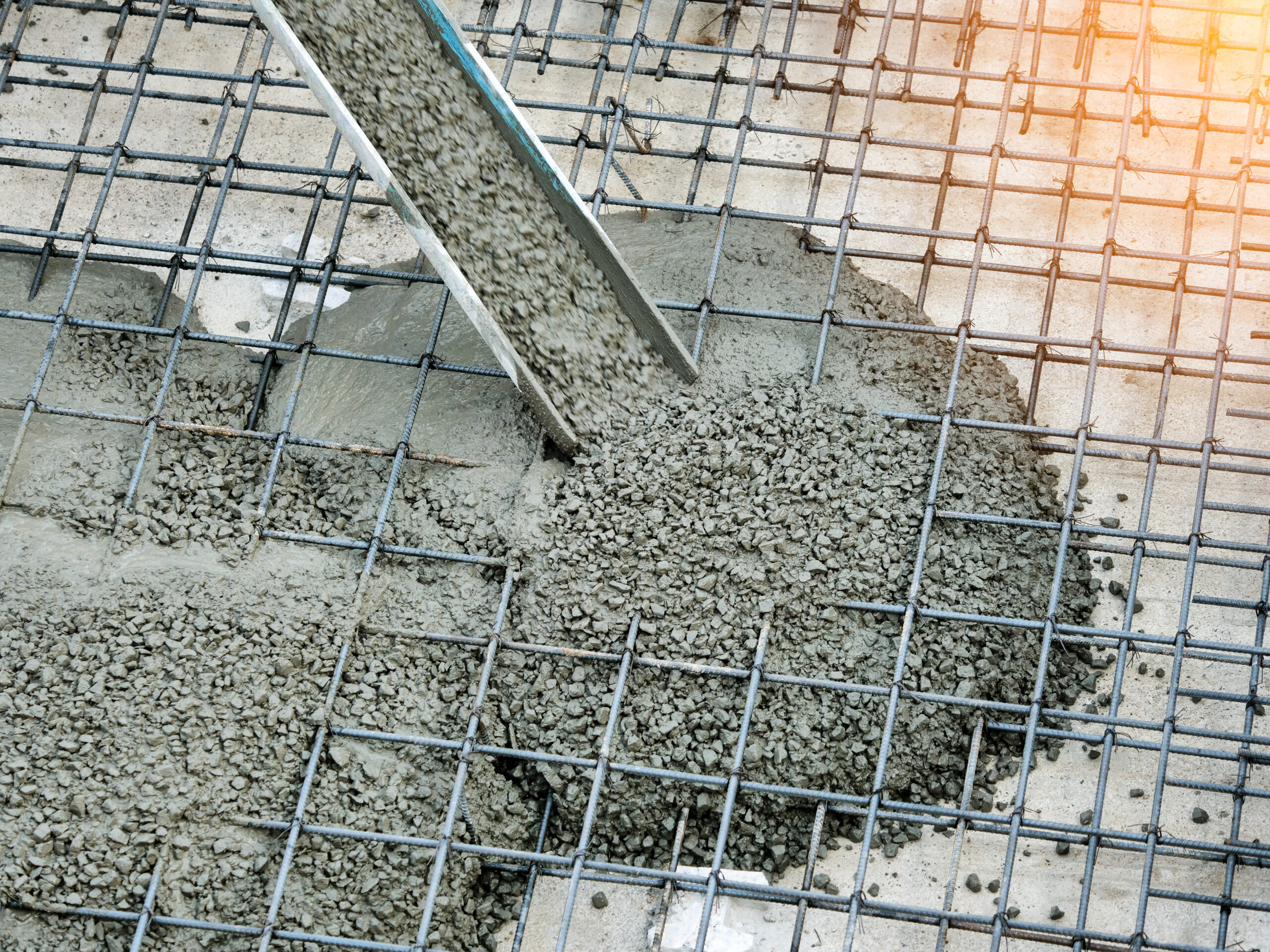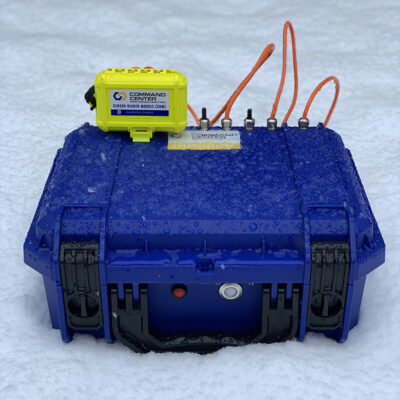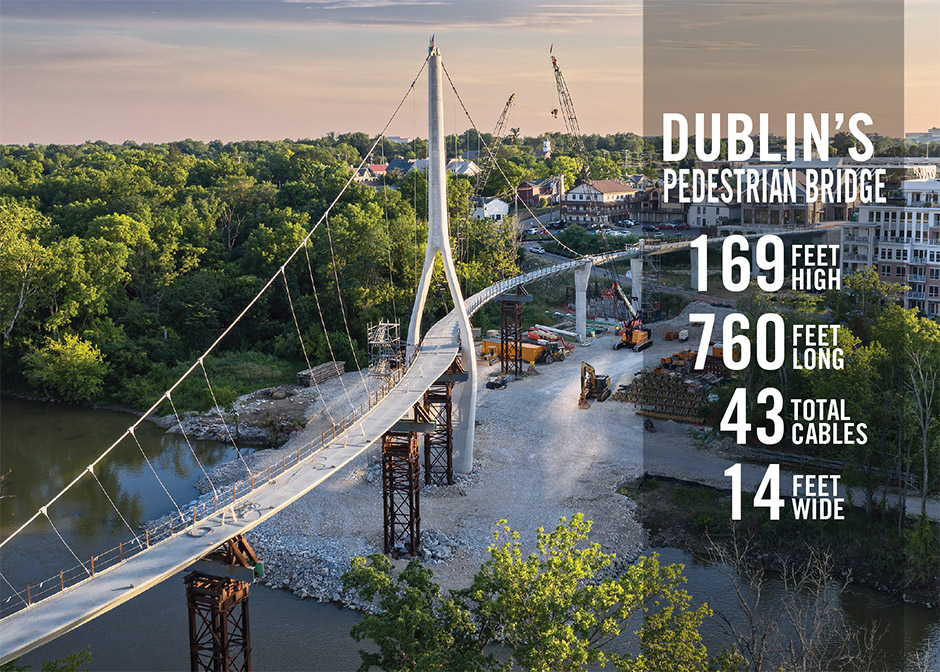The Pulaski Skyway Bridge in Kearny, New Jersey was exhibiting thermal cracking and major spalling of the concrete support piers. NJDOT contracted Ferreira Construction for the $60 million replacement project. The team needed to meet mass placement temperature specifications and used COMMAND Center™ to easily monitor concrete temperatures on the project.
The Goal: Prevent concrete thermal cracking
For large concrete structures that require mass concrete placement, there is great concern that temperature differentials within the structure will lead to thermal cracking ultimately affecting the structure’s durability and safety.
As concrete sets and gains strength, it gives off heat. In structures with mass placement, a large amount of heat can be generated. This heat is greater at the core of the structure and decreases over the distance from the core to its surfaces. This difference in temperature will lead to internal stresses in the concrete. If the stresses caused by this temperature difference between the core and the surfaces are greater than the strength of the concrete at any moment in time, the risk for thermal cracking increases. To minimize an increased risk for thermal cracking, owners, such as state department of transportation agencies, require the contractor to develop a thermal control plan or will specify how to monitor mass placement operations.
Thermal control plans evaluate risk based on climatic conditions, mix design, curing techniques, and geometry of the structure. They also provide recommendations of critical locations for monitoring temperatures to ensure the risk for thermal cracking is minimized. Thermal control plans are developed in-house with the right expertise or subcontracted out to engineers that specialize in the development of thermal control plans.
The Pulaski Skyway Bridge in Kearny, New Jersey required multiple mass placements, so a robust temperature monitoring system was needed to meet the specifications required in the thermal control plan to avoid thermal cracking.
The COMMAND Center™ System
The New Jersey Department of Transportation (NJDOT) contracted Ferreira Construction to remove and replace a ramp and four bridge support pier columns on the Pulaski Skyway Bridge Kearny Ramp. The bridge, which exhibited thermal cracking and major spalling, created durability concerns and needed replacement.
Work for the project included replacing existing columns with new ones measuring 14 feet by 15 feet and 55 feet high. Each column included four pours and each pour ranged from 50 to 600 total cubic yards of concrete placed. Ferreira hired CTL Group to develop their thermal control plan for their mass placements. To meet the specifications defined in the plan, Ferreira implemented COMMAND Center™ to monitor concrete temperatures.
COMMAND Center’s™ small, self-powered sensors continuously take and store temperature readings at user-specified intervals. To access the data, users connect the sensors to a reusable Sensor Reader Module (SRM), which transmits the concrete data in real-time via Bluetooth to an iOS device. Using the free COMMAND Center™ app, teams can easily view, analyze, and share the concrete data on their phone. Users can also generate and email reports of temperature history and temperature differential data in the app.
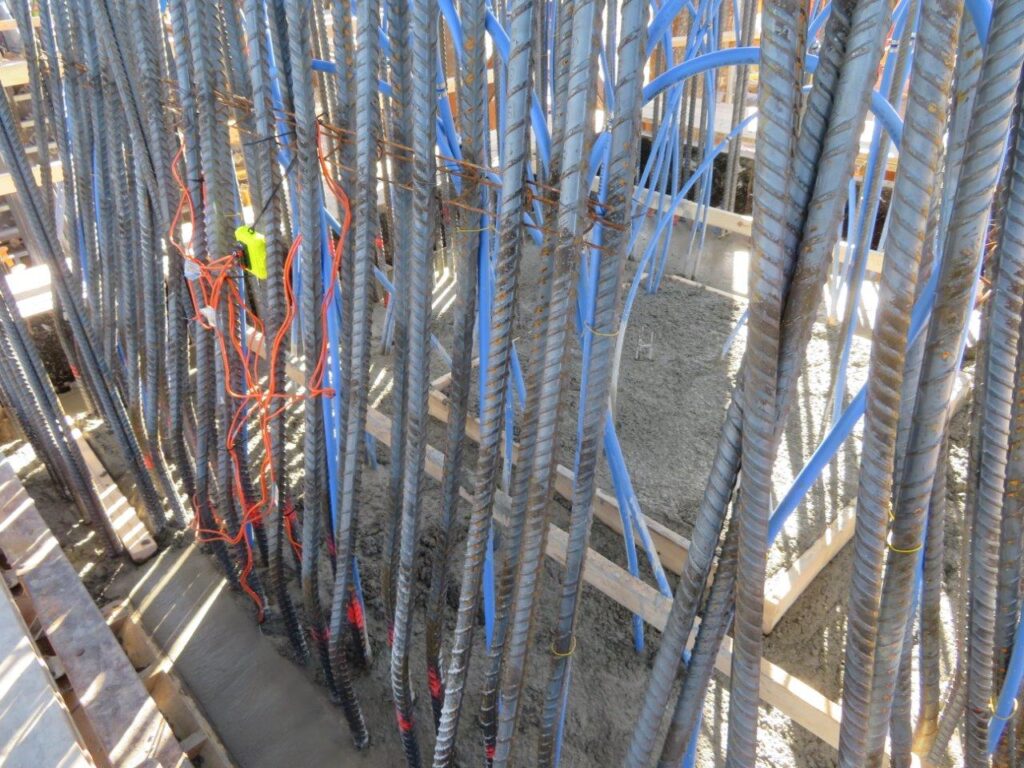
The Result: Better control of curing temperatures and no thermal cracking
Ferreira placed COMMAND Center™ Sensors in the center, side, and top of each mass concrete placement as defined in their thermal control plan. Redundant sensors were placed at each location and sensors were programmed to take measurements hourly. Pairs of durable sensor cables were connected to reusable, weatherproof Sensor Reader Modules (SRMs) located up to 50 feet above the ground. SRMs transmitted data wirelessly via Bluetooth throughout the monitoring period.
Ferreira used two dedicated iPhones installed with the COMMAND Center™ app to download and view data from the ground below. The operating engineer of the cooling plant monitored the data and used it to adjust the temperature of the cooling water and the flow through the pipes when necessary to ensure that the mass concrete remained within the temperature specifications.
By using COMMAND Center™ during curing to monitor temperature and adhere to the thermal control plan, Ferreira experienced no thermal cracking on the concrete surfaces of the four pier columns.
A major contributor to Ferreira’s success with COMMAND Center™ was the system’s hassle-free setup and user-friendly interface.
“COMMAND Center™ was easy to use and allowed us to have better control of the curing temperatures,” said project manager Peter Mastrola.
Mastrola said the Bluetooth capabilities of COMMAND Center’s™ Sensor Reader Modules (SRM) worked extremely well. The SRMs were connected to sensors and left in place about five feet down from each pour and readings were taken via Bluetooth from the ground up to 50 feet below.
Mastrola said COMMAND Center™ was “very easy to learn and set up” and the COMMAND Center™ team’s support and guidance were greatly appreciated for the project.
The COMMAND Center™ system comes with free, high-quality customer support and in-depth training. In mass concrete placements such as the Pulaski Skyway Bridge project, where temperature gradients can make or break a durable, long-lasting product, COMMAND Center™ can assist clients in continuously monitoring internal temperature and adhering to a project’s thermal control plan.


